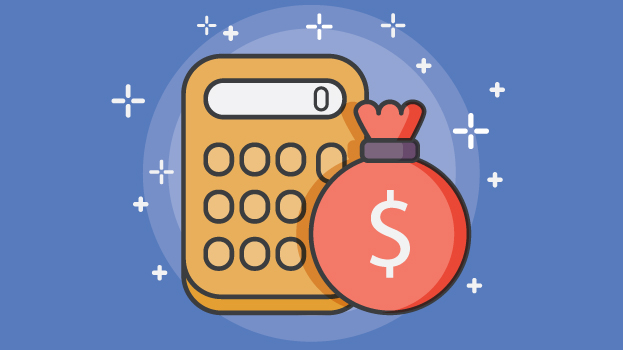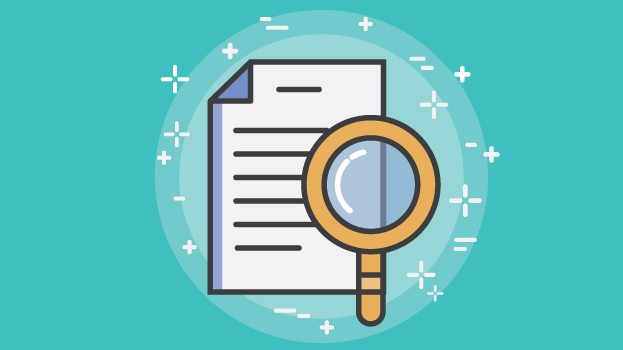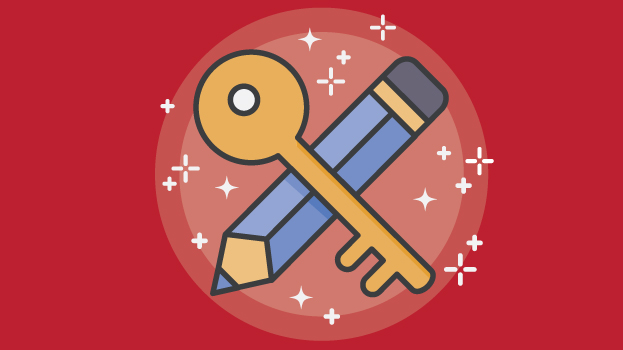In order to keep your business running smoothly during this time of uncertainty, our Payroll team has kindly compiled all of the details regarding both the Australian & New Zealand governments’ economic support to businesses in response to the COVID-19 coronavirus crisis.
All of the following information is valid as of the 27th of March but will continue to be updated as the situation evolves. Don’t hesitate to bookmark this page and refer back to it for convenience.
Australia
The Australian Government has announced measures to support businesses impacted by the coronavirus (COVID-19). If you’re a sole trader or you employ people, learn what your business can get and where to go for help.
ATO
The Australian Tax Office (ATO) is providing relief for some tax obligations for businesses affected by the outbreak, on a case-by-case basis. Contact the ATO’s Emergency Support Infoline for businesses on 1800 806 218 for more information or to request help.
The Boosting Cash Flow for Employers
It will provide up to $25,000 back to business, with a minimum payment of $2,000 for eligible businesses. The payment will provide temporary cash flow support to small and medium businesses that employ staff during the economic downturn associated with coronavirus. The payment will be tax-free.
Eligibility
Small and medium business entities with aggregated annual turnover under $50 million and that employ workers will be eligible. Eligibility will generally be based on prior year turnover.
The payment will be delivered by the ATO as a credit in the activity statement system from 28 April 2020 when eligible businesses lodge (see below) upcoming activity statements.
Eligible businesses that withhold tax to the ATO on their employees’ salary and wages will receive a payment equal to 50% of the amount withheld, up to a maximum payment of $25,000.
Eligible businesses that pay salary and wages will receive a minimum payment of $2,000, even if they are not required to withhold tax.
Timing
The Boosting Cash Flow will be applied for a limited number of activity statement lodgments. The ATO will deliver the payment as a credit to the business upon lodgment of their activity statements. Where this to place the business in a refund position, the ATO will deliver the refund within 14 days.
Quarterly lodgers will be eligible to receive the payment for the quarters ending March 2020 and June 2020.
Monthly lodgers will be eligible to receive the payment for the lodgment months of March 2020, April 2020, May 2020 and June 2020. To provide similar treatment to quarterly lodgers, the payment will be calculated at three times the rate (150%) in the March 2020 activity statement.
The minimum payment will be applied to the business’s first lodgment.
Payment deferrals
If you or your business have been impacted by COVID-19, ATO can work with you to defer some payments and vary instalments you have due; such as income tax, activity statement (including PAYG instalments), FBT and excise payments by up to four months.
Monthly GST credits
Businesses on a quarterly reporting cycle may elect to change their GST reporting and payment to monthly, to get quicker access to GST refunds they are entitled to. You can only change from the start of a quarter, so a change now will take effect from 1 April 2020.
Changing your GST reporting cycle to monthly doesn’t mean you have to change your PAYG withholding reporting cycle. You can manage this by specifying the roles you are changing.
Once you choose to report and pay GST monthly, you must keep reporting monthly for 12 months before you can elect to revert to quarterly reporting.
However, if your GST turnover is more than $20 million you must pay and report monthly.
If you’re registered for fuel tax credits and change your GST reporting from quarterly to monthly, you will also need to claim your fuel tax credits monthly.
You can change your GST reporting cycle through your tax or BAS agent, in the business portal, or by phoning us on 13 72 26.
Pay as you go instalments
(not payroll-related, but company income tax-related)
If you are a quarterly pay as you go (PAYG) instalments payer, you can vary your PAYG instalments on your activity statement for the March 2020 quarter. You can do this by lodging a revised activity statement before your instalment is due and before you lodge your tax return for the year. Businesses that vary their PAYG instalment rate or amount can also claim a refund for any instalments made for the September 2019 and December 2019 quarters.
If you are a monthly payer and have a base assessment instalment income of $500 million or less and want to vary your instalment rate and claim a refund on previous instalments paid, you will need to phone us on 13 72 26 to discuss.
If you realize you’ve made a mistake working out your PAYG instalment, you can correct it by lodging a revised activity statement or varying a subsequent instalment.
JobKeeper
The JobKeeper Payment scheme is a temporary subsidy for businesses significantly affected by COVID-19. Created to assist businesses to be able to continue paying employees, eligible employers, sole traders and other entities can apply to receive $1,500 per eligible employee per fortnight.
Update: The payment rate of $1,500 per fortnight for eligible employees and business participants will be reduced to $1,200 per fortnight from 28 September 2020 and to $1,000 per fortnight from 4 January 2021. From 28 September 2020, lower payment rates will apply for employees and business participants that worked fewer than 20 hours per week.
Eligibility
From March to September 2020, employers are eligible for the JobKeeper payment if all of the following apply:
On 1 March 2020, you carried on a business in Australia, or were either
– a not-for-profit organisation that pursued your objectives principally in Australia, or
– deductible gift recipient (DGR) endorsed either, as a public fund or for a public fund you operated, under the Overseas Aid Gift Deductibility Scheme (DGR item 9.1.1) or for developed country relief (DGR item 9.1.2)
– You employed at least one eligible employee on 1 March 2020.
– Your eligible employees are currently employed by your business for the fortnights you claim for (including those who are stood down or re-hired).
– Your business has faced either a
- 30% fall in turnover (for an aggregated turnover of $1 billion or less)
- 50% fall in turnover (for an aggregated turnover of more than $1 billion)
- 15% fall in turnover (for ACNC-registered charities other than universities and schools).
From 28 September 2020, businesses and not-for-profits seeking to claim the JobKeeper Payment will be required to demonstrate that they have suffered an ongoing significant decline in turnover using actual GST turnover (rather than projected GST turnover).
From 28 September 2020, businesses and not-for-profits will be required to reassess their eligibility with reference to their actual GST turnover in the June and September quarters 2020. They will need to demonstrate that they have met the relevant decline in turnover test in both of those quarters to be eligible for the JobKeeper Payment from 28 September 2020 to 3 January 2021.
From 4 January 2021, businesses and not-for-profits will need to further reassess their turnover to be eligible for the JobKeeper Payment. They will need to demonstrate that they have met the relevant decline in turnover test with reference to their actual GST turnover in each of the June, September and December quarters 2020 to remain eligible for the JobKeeper Payment from 4 January 2021 to 28 March 2021.
To be eligible for JobKeeper Payments under the extension, businesses and not-for-profits will still need to demonstrate that they have experienced a decline in turnover of:
– 50 per cent for those with an aggregated turnover of more than $1 billion;
– 30 per cent for those with an aggregated turnover of $1 billion or less; or
– 15 per cent for Australian Charities and Not for profits Commission-registered charities (excluding schools and universities).
If a business or not-for-profit does not meet the additional turnover tests for the extension period, this does not affect their eligibility prior to 28 September 2020.
The JobKeeper Payment will continue to remain open to new recipients, provided they meet the existing eligibility requirements and the additional turnover tests during the extension period.
Other eligibility rules for businesses and not-for-profits and their employees remain unchanged. Further information on those rules, head here.
Timing
Originally set, to run from the 30th of March until the 27th of September 2020, the Australian government announced on the 21st of July 2020 that they would be extending the JobKeeper scheme by a further six months to the 28th of March 2021. These changes do not impact JobKeeper payments until after 28 September 2020.
Support will be targeted to businesses and not-for-profits that continue to be significantly impacted by the Coronavirus. The payment rate will be reduced and a lower payment rate will be introduced for those who work fewer hours. Other eligibility rules remain unchanged.
JobKeeper Payment Rate
From 30th of March to the 28th of Septmber 2020, the JobKeeper Payment rates will be:
– $1,500 per fortnight for all eligible employees who, in the four weeks of pay periods before 1 March 2020, were working in the business or not-for-profit for 20 hours or more a week on average, and for eligible business participants who were actively engaged in the business for 20 hours or more per week on average in the month of February 2020; and
From 28 September 2020 to 3 January 2021, the JobKeeper Payment rates will be:
– $1,200 per fortnight for all eligible employees who, in the four weeks of pay periods before 1 March 2020, were working in the business or not-for-profit for 20 hours or more a week on average, and for eligible business participants who were actively engaged in the business for 20 hours or more per week on average in the month of February 2020; and
– $750 per fortnight for other eligible employees and business participants.
From 4 January 2021 to 28 March 2021, the JobKeeper Payment rates will be:
– $1,000 per fortnight for all eligible employees who, in the four weeks of pay periods before 1 March 2020, were working in the business or not-for-profit for 20 hours or more a week on average and for business participants who were actively engaged in the business for 20 hours or more per week on average in the month of February 2020; and
– $650 per fortnight for other eligible employees and business participants.
Businesses and not-for-profits will be required to nominate which payment rate they are claiming for each of their eligible employees (or business participants).
The Commissioner of Taxation will have discretion to set out alternative tests where an employee’s or business participant’s hours were not usual during the February 2020 reference period. For example, this will include where the employee was on leave, volunteering during the bushfires, or not employed for all or part of February 2020.
Guidance will be provided by the ATO where the employee was paid in non-weekly or non-fortnightly pay periods and in other circumstances the general rules do not cover.
The JobKeeper Payment will continue to be made by the ATO to employers in arrears. Employers will continue to be required to make payments to employees equal to, or greater than, the amount of the JobKeeper Payment (before tax), based on the payment rate that applies to each employee. This is called the wage condition.
Please consult with your tax advisor to assist further. If you do not have a tax advisor or chartered accountant in Australia, get in touch with our ANZ Head of Payroll services: Crystal Li, our business solution team might be able to help.
State Revenue Offices – Payroll Tax Relief
ACT
All ACT businesses with Group Australia-wide wages of up to $10 million can defer their 2020-21 payroll tax, interest free until 1 July 2022. Businesses will need to complete a simple online application form (which will be available soon on the ACT Revenue Office website) to confirm their eligibility.
Eligible businesses will need to lodge their payroll tax returns as normal but will not be required to make the associated payment at the usual time. If the deferred amount is paid before 1 July 2022, no interest will be charged. Interest will be applied to any outstanding deferred amounts from 1 July 2022.
– For those who lodge their payroll tax assessment monthly, deferral can commence for their July 2020 payroll tax liability, which is usually payable by 7 August.
– For those who lodge their payroll tax assessment annually, they can defer payment of their full 2020-21 payroll tax liability, which is usually payable in July 2021.
NSW
Payroll tax customers whose total grouped Australian wages for the 2019/20 financial year are no more than $10 million will have their annual tax liability reduced by 25% when they lodge their annual reconciliation, which is due on 28th of July.
For those customers who lodge and pay monthly and whose total Australian wages will be no more than $10 million for the current financial year, no payment for the months of March, April or May 2020 will be required.
When lodging your annual reconciliation, you will still need to provide wage details paid in these months and will receive the benefit of a 25% reduction in the amount of tax you would have had to pay for 2019-20.
NT
The payroll tax exemption for hiring Territory employees has been extended to 30 June 2021.
QLD
If you are an employer (or part of a group of employers) who pays $6.5 million or less in Australian taxable wages, you may receive an email about a:
– refund of your payroll tax for 2 months
– payroll tax holiday (i.e. no payroll tax to be paid) for 3 months.
You can also apply for a deferral of payroll tax for the 2020 calendar year. (If you have already applied for a deferral, you do not need not reapply – it will be extended.)
If you do not receive an email, or you are unsure about your eligibility, complete the refund/holiday application form.
If you are an employer (or part of a group of employers) who pays more than $6.5 million in Australian taxable wages and have been negatively affected (directly or indirectly) by coronavirus, you can apply for a:
– deferral of payroll tax for the 2020 calendar year (If you have already applied for a deferral, you do not need not reapply – it will be extended.)
– refund of your payroll tax for 2 months.
Complete the 2 online application forms deferral application form and refund/holiday form (must apply this one by 31 May 2020). You can apply at any time the relief package is available. QLD State Revenue Office will send an email to confirm if your application is approved.
You must continue to lodge returns in OSRconnect – without paying them during this time. But you can resume paying returns at any time during the deferral period.
SA
For business with Australian grouped wages up to $4 million, there will be a six-month payroll tax waiver. No application will be required as RevenueSA will notify these businesses through RevenueSA Online.
Monthly payroll tax returns must still be lodged to capture wages for the month, with no payment to be made.
For businesses with Australian grouped wages over $4 million, there will be a six-month payroll tax deferral.
An online application will be developed to apply for the payroll tax deferral.
Monthly payroll tax returns must still be lodged to capture wages for the month, with payment deferred to October 2020.
TAS
A – The Government will waive payroll tax for the last four months of this financial year in the hospitality, tourism, seafood, and exports sectors.
B – Small businesses will also be able to apply to have their payroll tax waived.
VIC
Businesses with annual taxable wages up to $3 million will have their payroll tax for the 2019-20 financial year waived.
Eligible businesses must continue to lodge returns but do not need to make further payments for this financial year.
The State Revenue Office will directly contact eligible businesses in relation to reimbursement for payroll tax already paid in the financial year.
These businesses can also defer paying payroll tax for the first quarter of the 2020-21 financial year.
WA
The Government is introducing three payroll tax measures to support businesses impacted by the coronavirus.
1. The $1 million payroll tax threshold will be brought forward by six months to July 1, 2020.
2. Employers or groups of employers, who pay $7.5 million or less in Australian taxable wages and have been directly or indirectly impacted by COVID-19 can apply to defer their monthly payroll tax payments until 21 July 2020.
3. Small businesses that pay payroll tax will receive a one-off grant of $17,500. For a group of employers, a single grant will be payable to the designated group employer.
You do not need to apply for the grant. Grants will automatically be paid by cheque from July but there will be delays for taxpayers whose tax status changed in 2018-19 or who became liable for payroll tax during the 2018-19 or 2019-20 assessment year. Eligible taxpayers should log in to Revenue Online to ensure their postal address is correct.
See the COVID-19 payroll tax relief web page for information about these measures and details about how to apply to defer payments.
New Zealand
The New Zealand Government has released an economic response package to help cushion the impact of COVID-19 and support the economy during the COVID-19 crisis.
The package includes:
Wage subsidy scheme
Wage subsidies will be available for all businesses significantly impacted by COVID-19 including:
- employers that are struggling to retain employees
- sole traders
- self-employed
- new and existing businesses.
Wage subsidies will be available for businesses in all sectors and regions that can show a 30% decline in revenue for any month between January and June 2020 compared to the year before (including projected revenue).
The subsidy will be:
- $585.80 per week for a full-time employee (20 hrs or more)
- $350.00 per week for a part-time employee (less than 20 hrs).
The payment will be made as a lump sum for a period covering 12 weeks. This means employers will receive a payment of $7,029.60 for a full-time employee and $4,200 for a part-time employee. The maximum amount any one employer can receive is $150,000.
More information on who qualifies for the wage subsidy, definitions for wage subsidy qualifications, and how to apply, can be found from Work and Income. You may also need a New Zealand Business Number (NZBN) to apply.
COVID-19 employer support (external link) — Work and Income
NZBN (external link) – New Zealand Business Number
Leave and self-isolation support
Workers and businesses have responsibilities to prevent the spread of COVID-19. The purpose of the COVID-19 leave and self-isolation scheme is to support workers financially to self-isolate, or while ill with COVID-19, where this is required so that all businesses and workers can do the right thing.
From 17 March 2020, the COVID-19 leave payment will be available to support people financially if they:
- need to self-isolate
- can’t work because they are sick with COVID-19
- can’t work because they are caring for dependents who are required to self-isolate or who are sick with COVID-19.
The payments will be:
- $585.80 per week for a full-time worker
- $350 per week for a part-time worker.
The COVID-19 leave payment will be available for eight weeks from 17 March 2020. Employers will be able to apply for this more than once.
More information on who qualifies for the leave payment, and how to apply, can be found from Work and Income. You may also need a New Zealand Business Number (NZBN) to apply.
COVID-19 employer support (external link) — Work and Income
NZBN (external link) – New Zealand Business Number
Want to stay updated? Make sure to refer back to this page to stay in the loop. For any further questions, reach out to our Head of Payroll Services- ANZ, Crystal Li.













 March 24, 2020
March 24, 2020 









